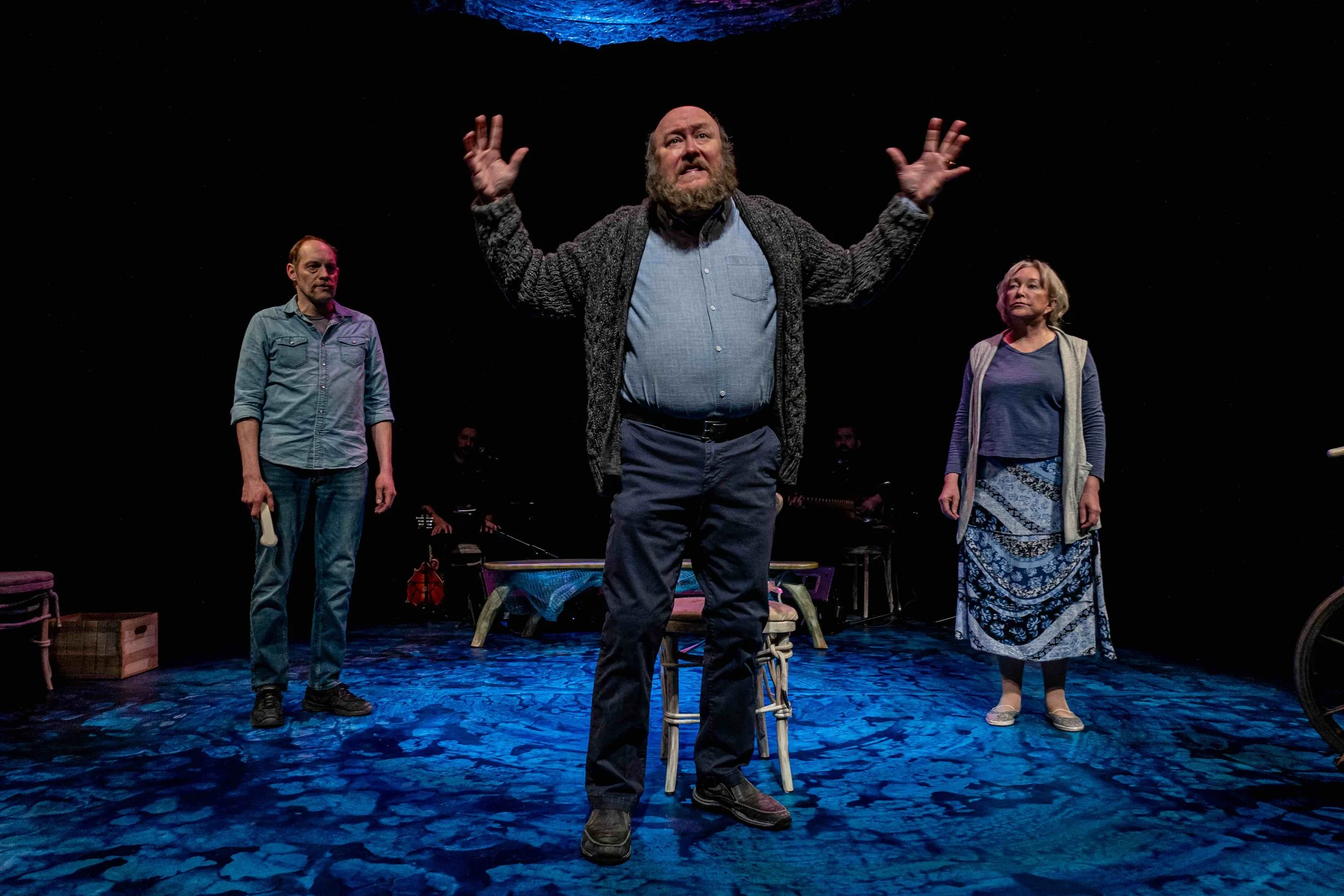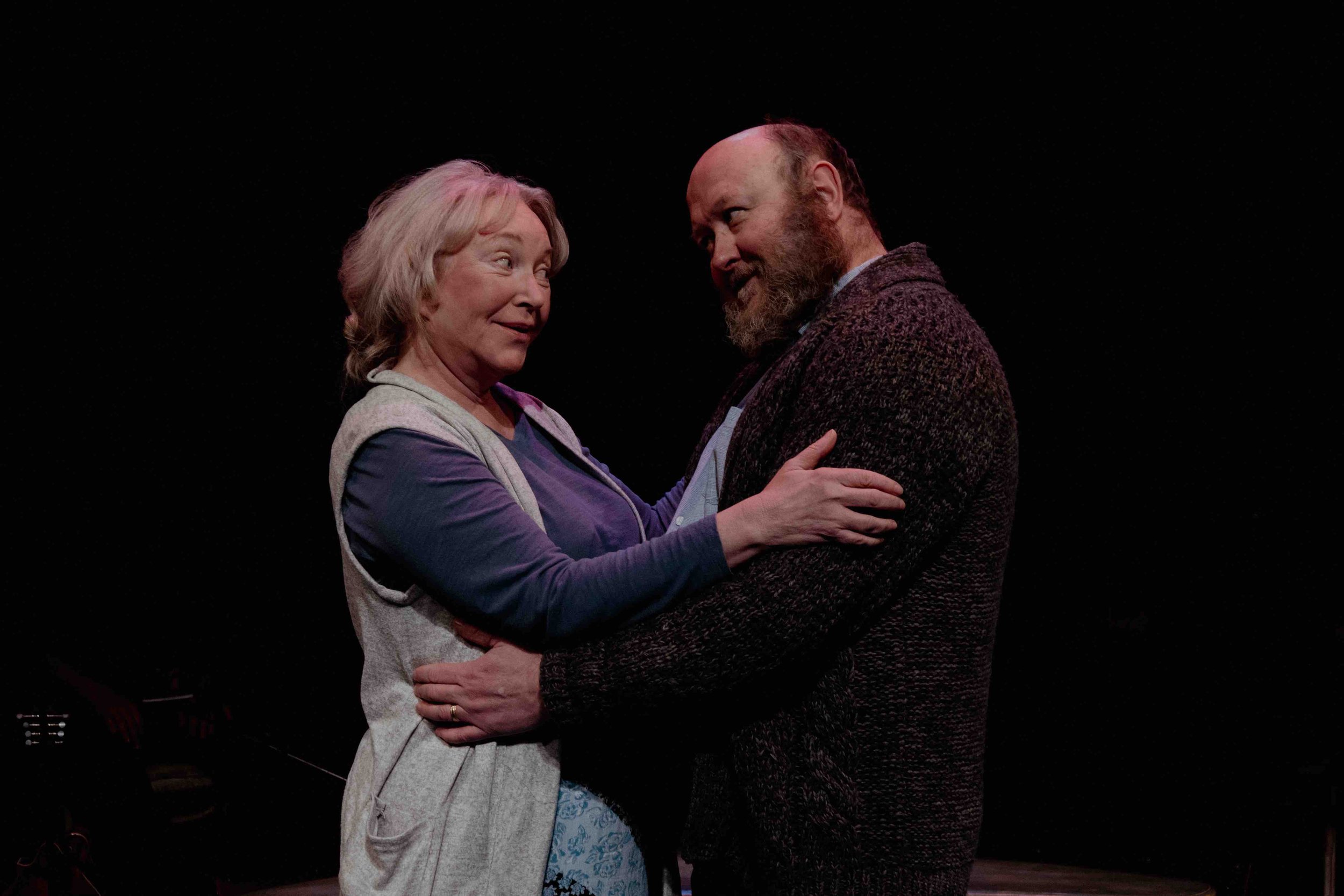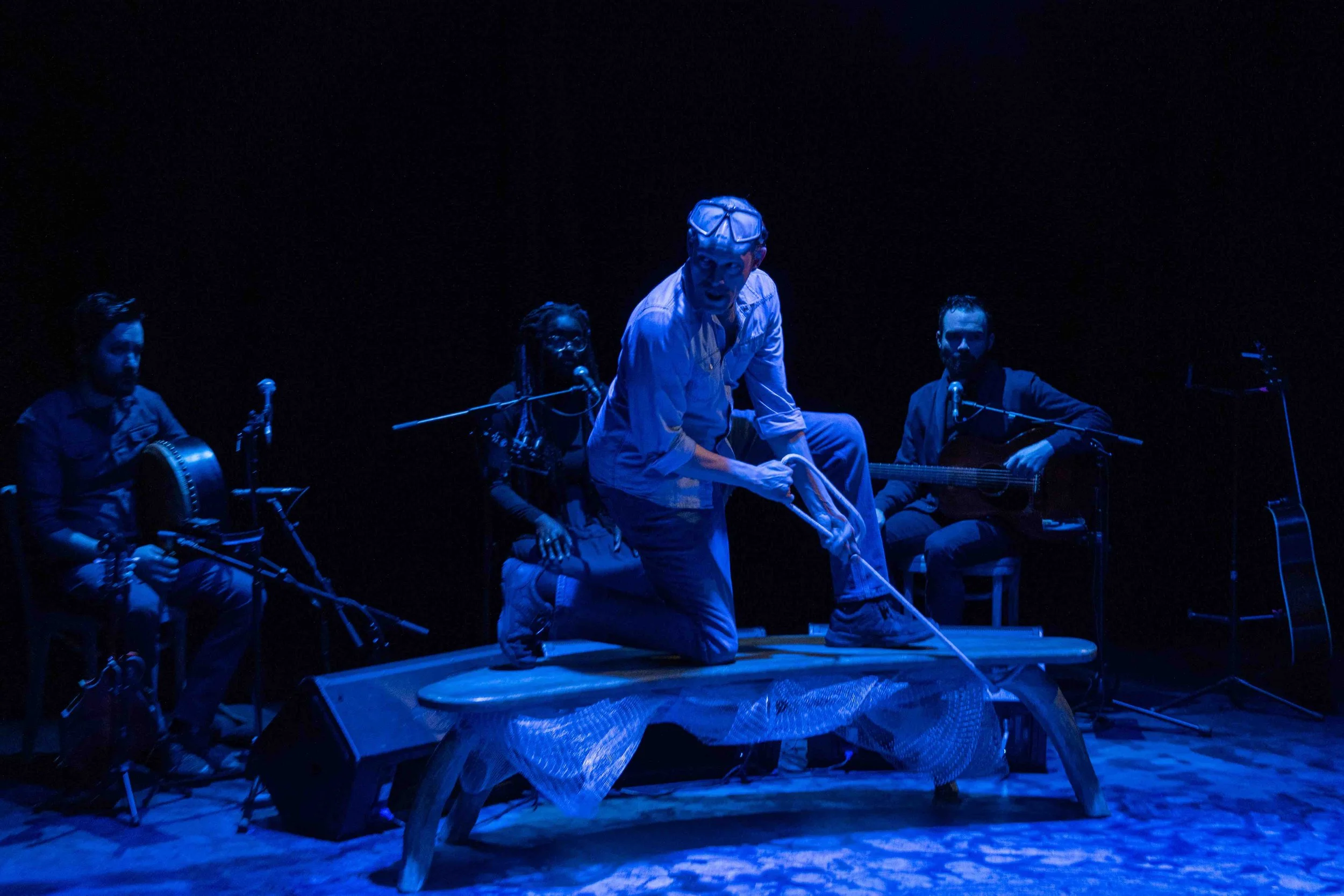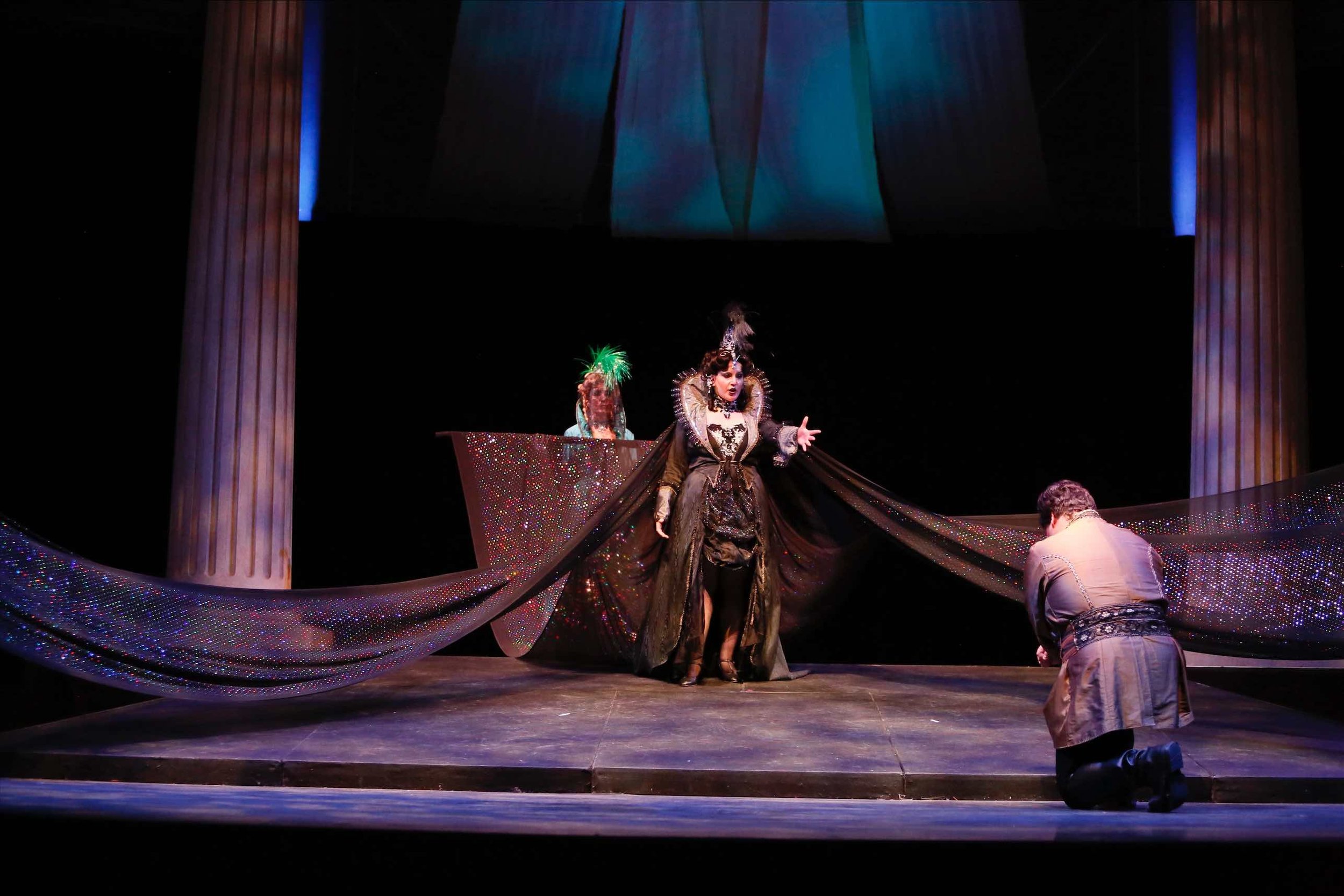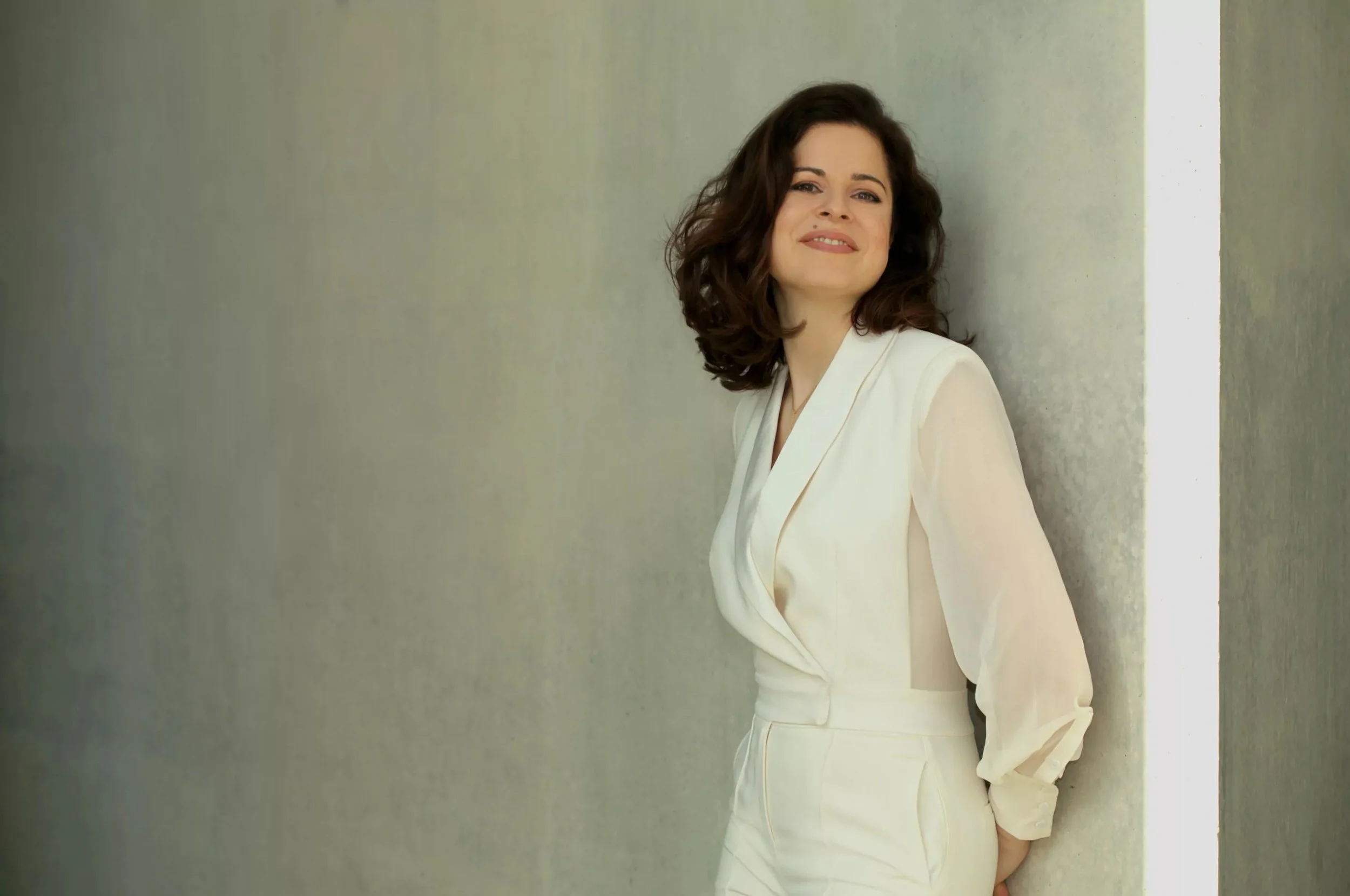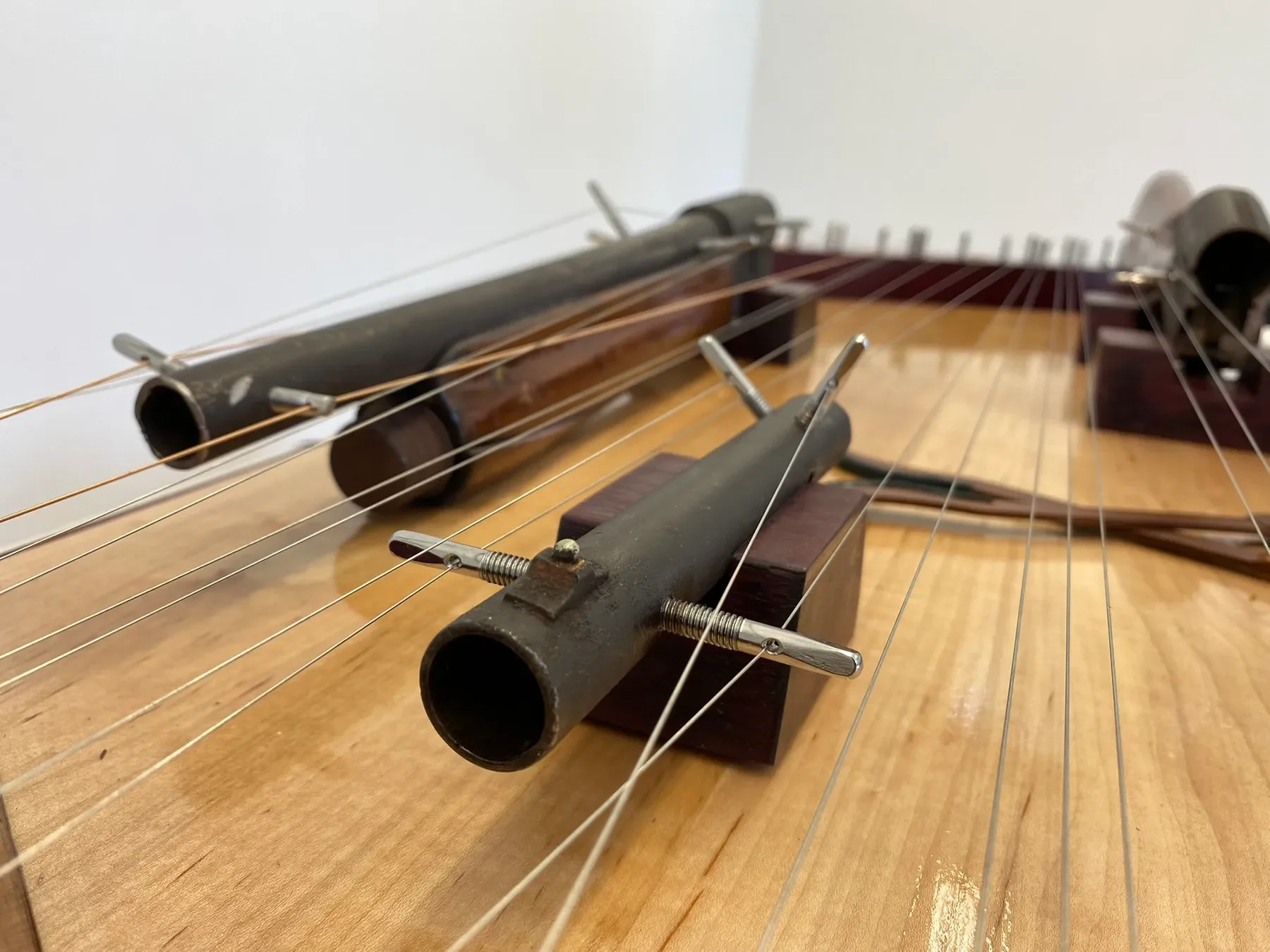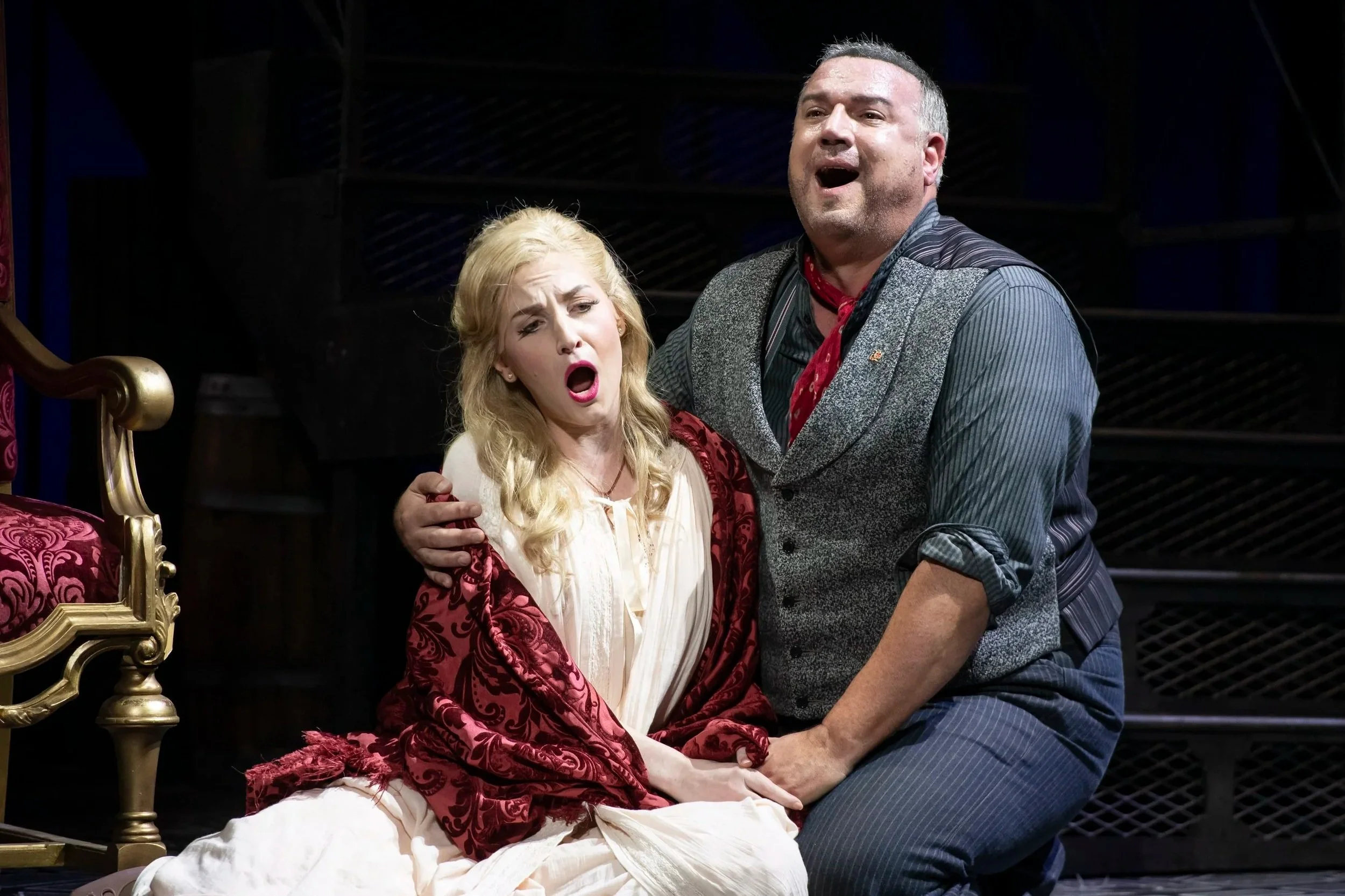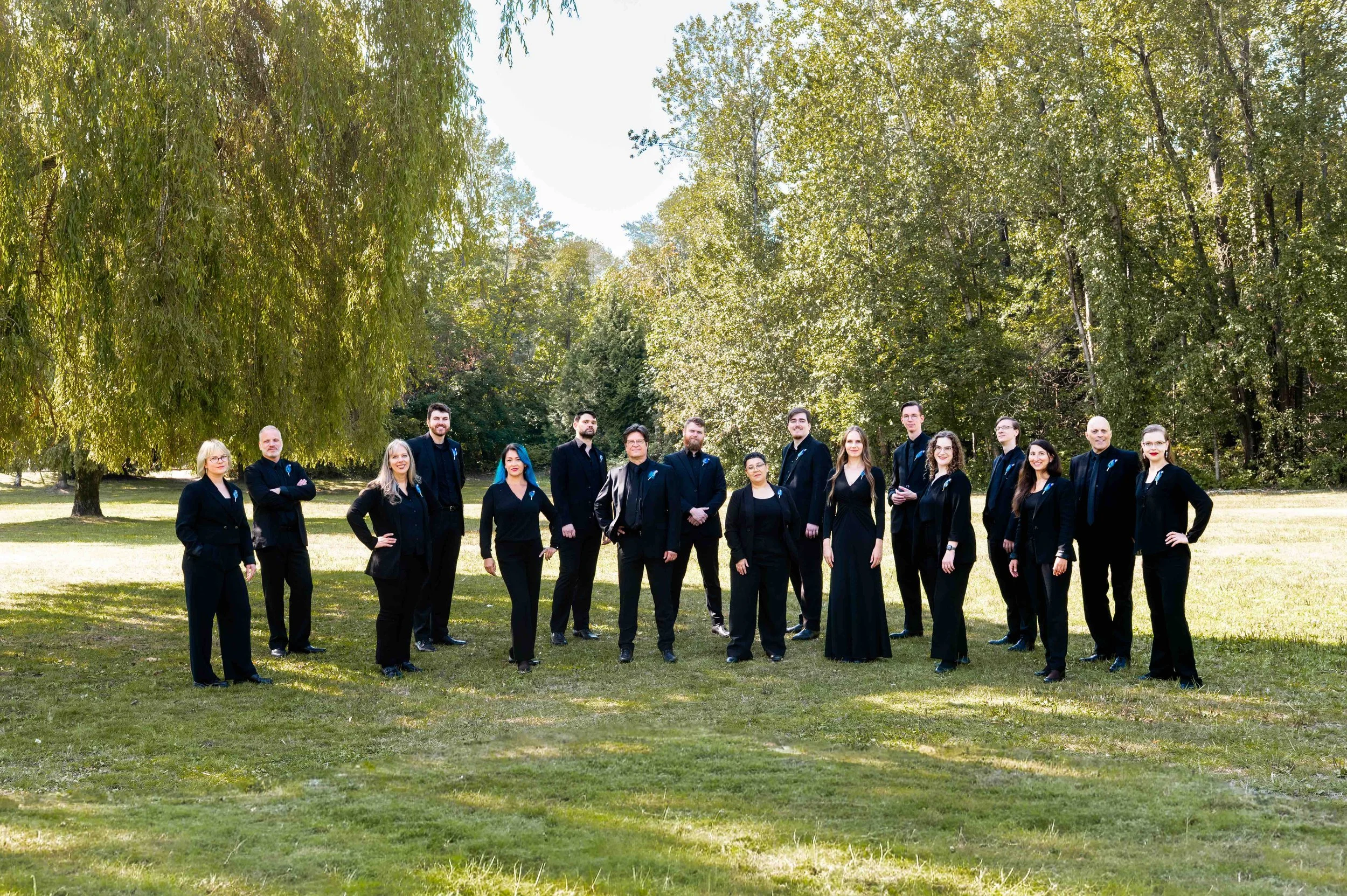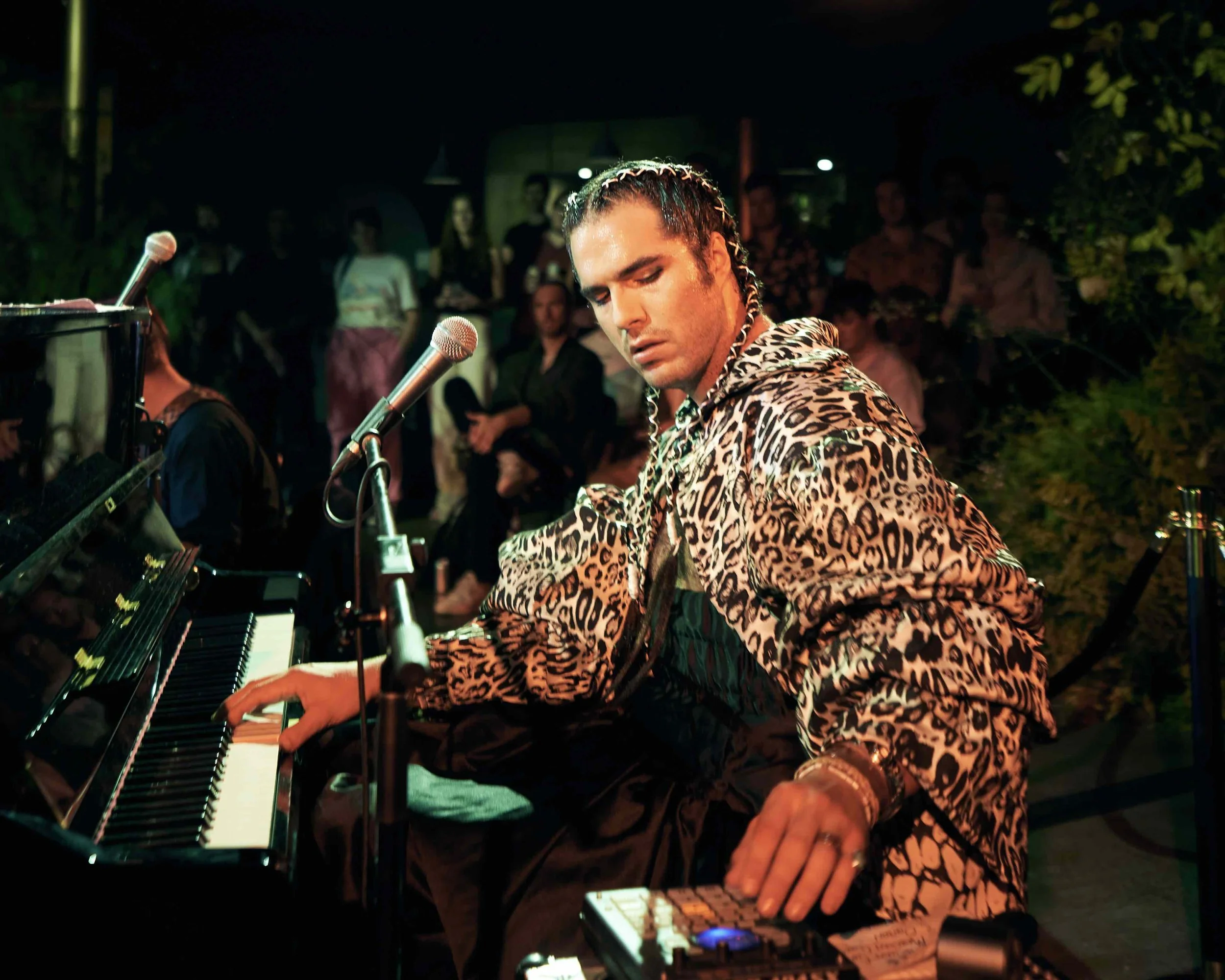Stir Q&A: Between Breaths tells the true story of a Newfoundland man who rescued over 500 whales
Artistic Fraud production at the Firehall Arts Centre centres on conservationist Jon Lien’s powerful work and eventual battle with dementia
Between Breaths. Photo by steelcut media
The Firehall Arts Centre presents Artistic Fraud’s Between Breaths from November 12 to 23
NEWFOUNDLAND CONSERVATIONIST JON LIEN, also known as “the Whale Man”, reportedly rescued more than 500 whales over the course of his life. He worked tirelessly to cut free the marine mammals that were trapped in fishing nets off the coast. Lien also pioneered whale alarms that fishermen could attach to their nets; they’d emit an unsavoury pinging noise, diverting the creatures away from harm.
In 2002, Lien was in a severe truck accident. By 2007, he was hospitalized full-time and living with dementia. He died of heart complications in 2010 at age 71.
Playwright Robert Chafe, who was born and raised in the small town of Petty Harbour, Newfoundland, and is now based in St. John’s, is honouring Lien’s legacy with a production called Between Breaths. It premiered in 2018 and is now getting a remount at the Firehall Arts Centre from November 12 to 23, courtesy of Artistic Fraud, the company Chafe founded with director Jillian Keiley.
Stir connected with the playwright before the show to learn a bit more about his creative process.
Thinking back on your process of writing Between Breaths, what initially drew you to the story of Jon Lien? What do you find most compelling about his life and career?
I went to school with Jon’s kids, and with his media work he was well known to me throughout high school in the ’80s and university in the ’90s. The first impulse to write about him came after I saw a version of him in a stage play at Rising Tide’s Trinity Festival in 2012. I had a sudden flush of emotion and couldn’t say why at the exact moment.
I originally thought I would write about Jon’s immense success and impact as a mediator between those in the fishing industry and those in conservation. It was not often you’d find fishermen in those days speaking fondly of conservationists, but many of them—including some in my own family—had immense respect for Jon. Originally, I wanted to investigate that, but when I began my first dig into his life and how his last decade played out, the play and its intentions took a big shift.
Between Breaths. Photo by steelcut media
It’s difficult to conceptualize how one might represent the process of rescuing whales in a theatrical setting. How did you go about portraying that aspect of Jon’s life in Between Breaths? What role does the character’s memory play in telling this story?
Most of our work starts with a conceptual design; we usually have at least a preliminary idea of what the visual metaphor for the story will be. In this case, during early drafts I imagined a giant whale skeleton hung above the stage, and actors on flies that seem to float and bob above it. It was only when we did a workshop presentation of the script and score in 2016, and saw the audience reaction, that we realized that those bells and whistles were not necessary.
Memory became a huge facet within the show with the decision to tell the story backwards, and that decision came from the simple desire to not end the play with Jon weakened by his illness and dying. These early decisions, in retrospect, sent us down the route of creating a piece highly embedded with visual language and a fair bit of logical interpretation for the audience. Jill’s suggestive staging, actively igniting the audience’s imagination, seemed like the perfect fit, one that we didn’t need to complicate.
Dementia is a deeply personal and complex struggle for many. What was your research process in writing about it? In Between Breaths, what parallels are drawn between Jon’s battle with dementia and his life’s work of freeing trapped whales?
I admit when I wrote the piece I didn’t have a lot of experience with the topic. That has sadly changed for me in the last few years, and I now magically find myself looking at the play I wrote a decade ago and wondering how I might have intuited it all.
Ultimately, I know I leaned hard on the Lien family’s personal narratives, and Jon’s immense character that was so clearly presented to me in my research interviews. It felt somehow organic, scripting this fearless, larger-than-life man slowly losing his agency, and the specific stories from the family provided the stepping stones. It of course became the great metaphor of the show: a man who spent his life freeing things becoming himself confined at the end. That metaphor was what drove the writing process and took me off the main track of industry and conservation mediation, though that theme still lives in the show as well.
Between Breaths. Photo by steelcut media
Can you tell us about the live score by the Once? How would you describe the trio’s sound—and what sort of emotional depth does it bring to the production?
Phil, Gerri, and Andrew are all old friends and colleagues of myself, Jill, and the company, and we have long been huge fans of their work. Our shows always carry a strong musical score, usually performed live, so early conceptions of any of our work come hand in hand with discussions of who should compose the music.
We were drawn immediately to the Once because the music captures the spirit of place that was so important to Jon, and thus the play. And they also have a remarkable ability to fold beauty and struggle in their work. They are ethereal and beautiful, but wrapped in that there is sadness and resilience. The work they did on the show perfectly captured the tone I was going for with the storytelling.
What reflections would you say Between Breaths offers on the power of the human spirit in times of difficulty? How have you seen this work resonate with audiences over the years?
Jill’s dad got sick and passed back in 2002, and for years after we struggled as a creative team to discuss death in our work. We went through several versions of death narratives in an attempt to capture the traces of beauty that come with someone’s passing. It can be a tricky thing to articulate, particularly when the passing in question is untimely or difficult. Ultimately, we didn’t get it right with any of those shows. It was only after we had created Between Breaths and watched the reaction of our audiences that we realized that we had come close to our early ambitions.
Between Breaths, for me, is kind of a wish: that we may all exit the world being, at least in our own minds, the best versions of ourselves. And if that could be the case, then there really could be beauty and joy in that passing. It’s very clear to us that that is what the show is about: joy, gratitude, personal power, even should we lose agency. I often see audiences for the show get that—feel the catharsis of joy in grief, though they may not be able to immediately put words to it.
![]()


